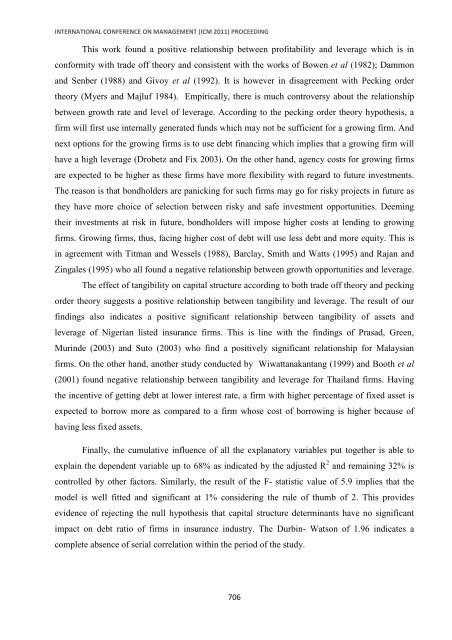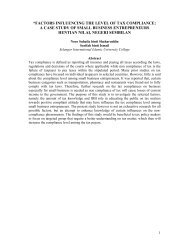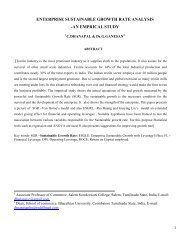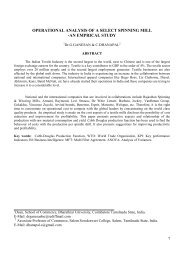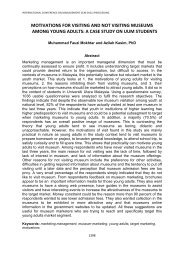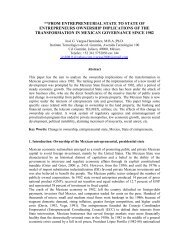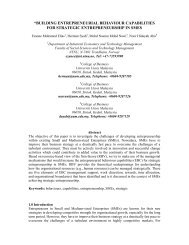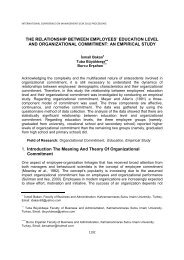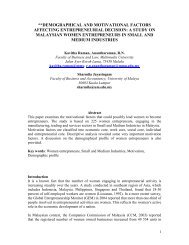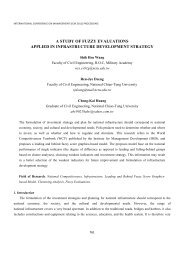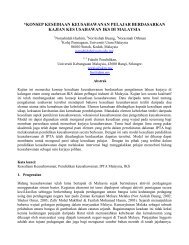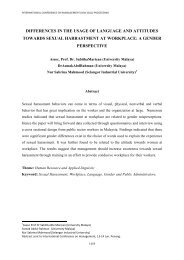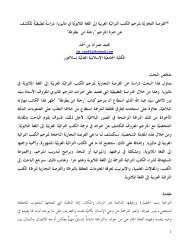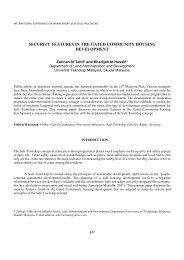DETERMINANTS OF CAPITAL STRUCTURE IN THE NIGERIAN ...
DETERMINANTS OF CAPITAL STRUCTURE IN THE NIGERIAN ...
DETERMINANTS OF CAPITAL STRUCTURE IN THE NIGERIAN ...
Create successful ePaper yourself
Turn your PDF publications into a flip-book with our unique Google optimized e-Paper software.
<strong>IN</strong>TERNATIONAL CONFERENCE ON MANAGEMENT (ICM 2011) PROCEED<strong>IN</strong>G<br />
This work found a positive relationship between profitability and leverage which is in<br />
conformity with trade off theory and consistent with the works of Bowen et al (1982); Dammon<br />
and Senber (1988) and Givoy et al (1992). It is however in disagreement with Pecking order<br />
theory (Myers and Majluf 1984). Empirically, there is much controversy about the relationship<br />
between growth rate and level of leverage. According to the pecking order theory hypothesis, a<br />
firm will first use internally generated funds which may not be sufficient for a growing firm. And<br />
next options for the growing firms is to use debt financing which implies that a growing firm will<br />
have a high leverage (Drobetz and Fix 2003). On the other hand, agency costs for growing firms<br />
are expected to be higher as these firms have more flexibility with regard to future investments.<br />
The reason is that bondholders are panicking for such firms may go for risky projects in future as<br />
they have more choice of selection between risky and safe investment opportunities. Deeming<br />
their investments at risk in future, bondholders will impose higher costs at lending to growing<br />
firms. Growing firms, thus, facing higher cost of debt will use less debt and more equity. This is<br />
in agreement with Titman and Wessels (1988), Barclay, Smith and Watts (1995) and Rajan and<br />
Zingales (1995) who all found a negative relationship between growth opportunities and leverage.<br />
The effect of tangibility on capital structure according to both trade off theory and pecking<br />
order theory suggests a positive relationship between tangibility and leverage. The result of our<br />
findings also indicates a positive significant relationship between tangibility of assets and<br />
leverage of Nigerian listed insurance firms. This is line with the findings of Prasad, Green,<br />
Murinde (2003) and Suto (2003) who find a positively significant relationship for Malaysian<br />
firms. On the other hand, another study conducted by Wiwattanakantang (1999) and Booth et al<br />
(2001) found negative relationship between tangibility and leverage for Thailand firms. Having<br />
the incentive of getting debt at lower interest rate, a firm with higher percentage of fixed asset is<br />
expected to borrow more as compared to a firm whose cost of borrowing is higher because of<br />
having less fixed assets.<br />
Finally, the cumulative influence of all the explanatory variables put together is able to<br />
explain the dependent variable up to 68% as indicated by the adjusted R 2 and remaining 32% is<br />
controlled by other factors. Similarly, the result of the F- statistic value of 5.9 implies that the<br />
model is well fitted and significant at 1% considering the rule of thumb of 2. This provides<br />
evidence of rejecting the null hypothesis that capital structure determinants have no significant<br />
impact on debt ratio of firms in insurance industry. The Durbin- Watson of 1.96 indicates a<br />
complete absence of serial correlation within the period of the study.<br />
706


